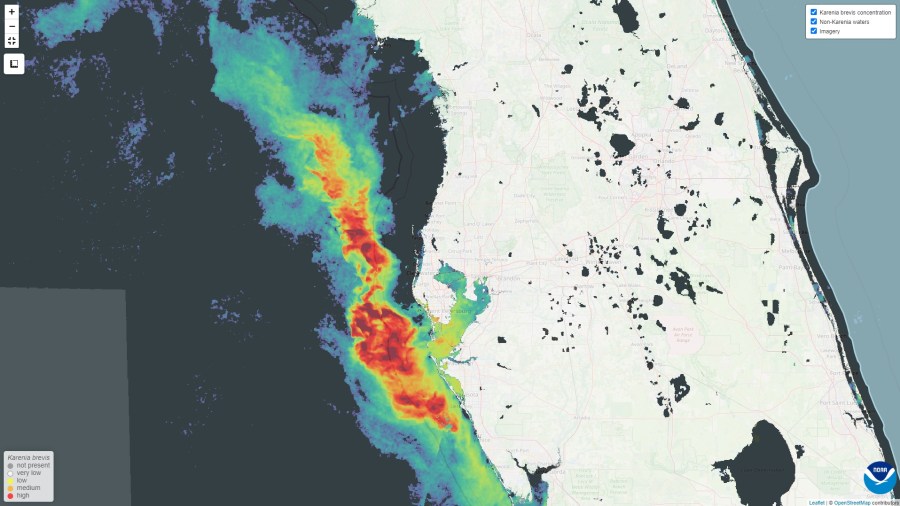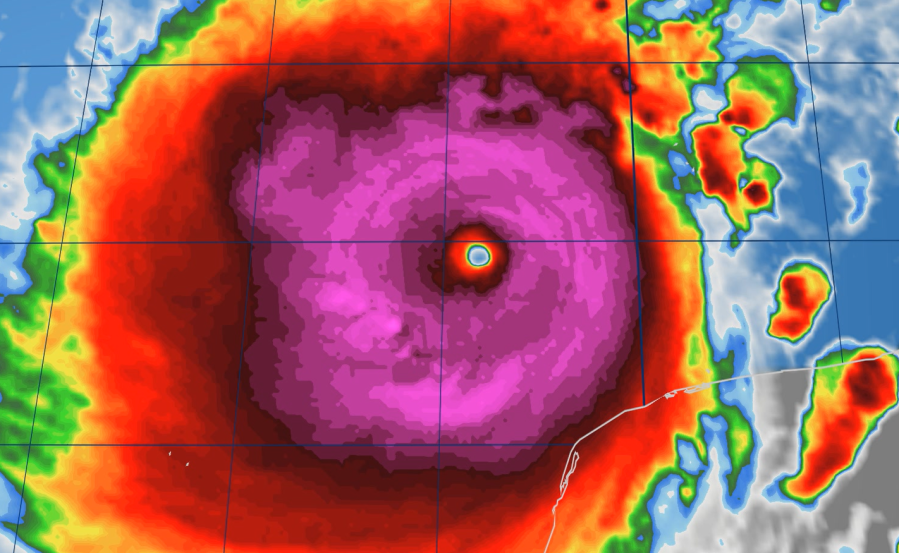Jeff Berardelli is WFLA’s Chief Meteorologist and Climate Specialist
Editor’s note: This story has been updated to clarify that more samples from the FWC are needed to determine the presence of red tide.
Over the past week, a large outbreak of algae has exploded in the Gulf just offshore from Tampa Bay. It can be seen on the NOAA Map below with red colors indicating high concentrations.

After the passage of hurricanes, outbreaks of algae, including red tide, are common. Although the image above shows high concentrations of algae, it may or may not be red tide. Over the next couple of weeks, samples will help to clarify the type of algae.
The NOAA forecast says that red tide bloom “intensification is likely along the Southwest Florida coast, as suggested by model results.”
Red tide is a naturally occurring type of algae called Karenia brevis which is quite common, especially in the warmer months along Florida’s West Coast. It feeds off relatively warm waters and high levels of nutrients. If concentrations are high enough, it can cause the water to turn red.
The bloom is likely related to the passage of Hurricane Helene and Hurricane Milton. On Oct. 4, after Helene, FWC reported samples of red tide surrounding Pinellas County. To be clear, red tide blooms in the absence of hurricanes, but hurricanes are known to amplify outbreaks.
We’ll have more clarity on whether this is red tide or not when FWC releases its next report.
The theory goes that hurricanes upwell colder, more nutrient-rich water from the depths of the Gulf of Mexico and those nutrients then feed the growth and proliferation of the algae that cause these red tide outbreaks.
It seems reasonable to assume that runoff from nutrients on land like phosphorus and nitrogen can also enhance a bloom. During both Helene and Milton, storm surge and rainfall flooding would have flushed extra nutrients from land into Tampa Bay and the Gulf.
It seems no coincidence that blooms followed Hurricane Irma in 2018, Hurricane Ian in 2022, and now Hurricane’s Helene and Milton.

The algae expanded fast. Pictured below are the NOAA satellite images of algae from Oct. 11 through the 15.

Red tide can cause fish kills and respiratory distress to people nearby. It can last for weeks or even months.















